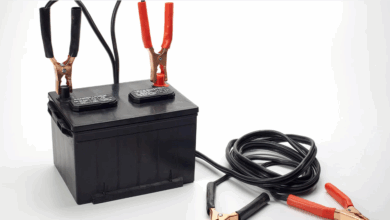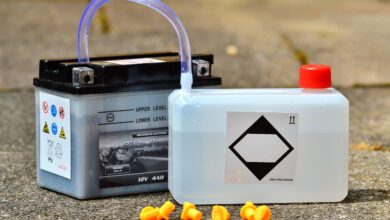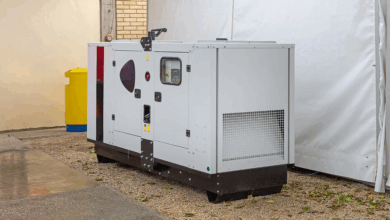What You Need to Know About 50 Amp Generators

Powering Up: What You Need to Know About 50 Amp Generators
In today’s unpredictable world, reliable power is more than a convenience – it’s often a necessity. Whether preparing for grid outages, powering a large RV adventure, or running a demanding job site, a generator can be an indispensable tool. But not all generators are created equal, and for those needing substantial power, a 50 Amp model often enters the conversation.
A 50 Amp generator represents a significant step up in power capability compared to smaller 15, 20, or 30 Amp units. Understanding what this rating means, what it can power, and the key considerations when choosing and using one is crucial for making an informed decision and ensuring safety.
What Does "50 Amp" Mean? Understanding the Power
The "Amp" (Ampere) rating refers to the amount of electrical current a device draws or, in the case of a generator, can safely deliver. While Amps measure current, we often relate generator power to Watts (W) or Kilowatts (kW), which measure the total power output (Voltage x Amps = Watts).
Most 50 Amp generators are designed to provide 120/240V split-phase power, typical for residential and large RV electrical systems. The 50 Amp rating usually applies to the maximum output capability available through a dedicated 50 Amp receptacle (specifically, a NEMA 14-50R outlet).
Using the standard 240V for this connection, a 50 Amp output translates to:
50 Amps x 240 Volts = 12,000 Watts or 12 kW
This calculation gives you the theoretical maximum power output available on that circuit. Generators are typically rated by their running watts (continuous power) and starting watts (a temporary surge to start motors). A generator with a 50 Amp outlet will generally have a running watt rating somewhere in the range of 9,500 to 13,000 watts (9.5 kW to 13 kW), and even higher starting watts. This substantial power output is why 50 Amp generators are chosen for more demanding applications.
Why Choose a 50 Amp Generator? Typical Applications
The primary reason to opt for a 50 Amp generator is its ability to power multiple large appliances or devices simultaneously. Common scenarios include:
- Whole-House (Partial) Backup: While a single 50 Amp generator might not run everything in a large home, it can comfortably power essential circuits during an outage. This often includes the refrigerator, freezer, lights, furnace fan, well pump, and potentially one or two larger appliances like a microwave or air conditioner (though AC requires careful load management). This is a popular solution for homeowners seeking significant emergency preparedness without the cost of a permanent standby generator.
- Large RVs and Campers: Many high-end RVs and travel trailers come equipped with 50 Amp service. This allows them to run multiple air conditioners, microwaves, televisions, and other appliances simultaneously without tripping breakers. A 50 Amp generator is essential for powering these RVs when shore power isn’t available.
- Job Sites and Construction: Powering multiple heavy-duty tools like saws, compressors, welders, and lighting systems simultaneously requires significant current. A 50 Amp generator can often handle the combined load and starting surges of such equipment.
- Small Business Critical Operations: For businesses needing to keep critical systems running during an outage (servers, essential lighting, refrigerators), a 50 Amp generator can provide sufficient power to prevent significant downtime and loss.
Key Features and Considerations
When looking at 50 Amp generators, several features impact their performance, usability, and suitability for your needs:
- Running vs. Starting Watts: Pay close attention to both ratings. Running watts tell you how much power it can continuously supply, while starting watts indicate its ability to handle the momentary power spike required by motor-driven appliances (like refrigerators, pumps, and air conditioners). Ensure the generator’s running watts meet your total continuous needs and the starting watts can handle the largest motor load you plan to start.
- Fuel Type:
- Gasoline: Most common and readily available. However, gasoline has a limited shelf life (months, not years) and produces higher emissions.
- Propane (LPG): Stores much longer than gasoline, burns cleaner, and is easily available in tanks. However, propane is less energy-dense than gasoline, meaning the generator might produce slightly less power or run for a shorter time on a comparable energy amount. It also requires managing propane tanks.
- Dual-Fuel: Offer the flexibility to run on either gasoline or propane. This provides options during fuel shortages or for long-term storage.
- Starting Method:
- Recoil (Pull Start): Standard on smaller generators but can be difficult on large engines.
- Electric Start: Requires a battery but makes starting much easier with the push of a button. Highly recommended for larger generators.
- Remote Start: Allows starting the generator from a distance, often useful in cold weather or when the generator is located away from the house or RV.
- Inverter vs. Conventional:
- Conventional: Produce power directly from the engine’s RPMs. This power can sometimes have voltage fluctuations or a "dirty" sine wave, which can be problematic for sensitive electronics (laptops, medical equipment). They are often louder.
- Inverter: Use advanced electronics to produce clean, stable sine wave power, safe for all electronics. They are typically more fuel-efficient and often quieter, as the engine speed can adjust to the load. While traditionally found on smaller generators, 50 Amp inverter models are becoming more available, offering significant advantages in terms of power quality and noise.
- Noise Level: Measured in decibels (dB). Large generators, especially conventional types, can be very loud (70-80+ dB at 23 feet). Consider where the generator will be located and potential noise ordinances or neighbor complaints. Inverter models are generally quieter.
- Outlets: Ensure the generator has the necessary outlets, specifically the NEMA 14-50R 50 Amp receptacle, but also ideally 30 Amp (TT-30R for RVs or L14-30R twist-lock) and standard 20 Amp (5-20R) outlets for versatility.
- Safety Features: Look for automatic low-oil shutdown (protects the engine), overload protection (prevents damage from exceeding capacity), and ideally GFCI (Ground Fault Circuit Interrupter) protected outlets for added safety, especially when using standard 120V outlets outdoors.
Installation and Connection: The Crucial Part
Properly connecting a 50 Amp generator, especially for home backup, is critically important for safety and functionality.
- NEVER Backfeed: The most dangerous mistake is connecting a generator directly to your home’s electrical panel via a plug into a standard wall outlet (often called "backfeeding"). This bypasses safety breakers and can send power back onto the grid, electrocuting utility workers attempting to restore power.
- Transfer Switch is ESSENTIAL for Home Backup: For connecting a generator to your home’s wiring system, you MUST use a transfer switch. This device isolates your home’s electrical system from the utility grid, ensuring power flows only from the generator or the grid, never both simultaneously, and prevents backfeeding. Transfer switches can be manual (you flip levers to switch power sources) or automatic (the generator starts and the switch transfers power automatically when utility power is lost). A qualified electrician is required to install a transfer switch correctly.
- Proper Cord: You will need a heavy-duty, properly rated generator cord with a NEMA 14-50P plug on one end (to connect to the generator’s 50A outlet) and the appropriate connector on the other end (either another 14-50P if plugging into a transfer switch inlet box, or specific connectors for RVs or other setups). The cord must be rated for the generator’s output and the distance required.
Safety First, Always!
Operating any generator comes with safety risks. Be acutely aware of:
- Carbon Monoxide (CO) Poisoning: Generators produce CO, a colorless, odorless, deadly gas. NEVER run a generator indoors, in a garage, or near windows, doors, or vents that could allow fumes to enter occupied spaces. Position the generator at least 20 feet away from your home and ensure exhaust is directed away from buildings. Install battery-operated CO detectors in your home.
- Grounding: Follow the manufacturer’s instructions regarding grounding the generator frame. Proper grounding helps prevent electric shock.
- Electrical Safety: Keep the generator and connection cords dry. Do not operate in rain or wet conditions without proper cover. Ensure cords are not damaged and connections are secure. Avoid overloading the generator.
- Refueling: Always shut off the generator and let it cool completely before adding fuel. Gasoline is highly flammable.
- Storage: Store fuel safely in approved containers. Follow storage guidelines for the generator itself, especially regarding fuel in the tank or carburetor.
Maintenance Matters
Regular maintenance is key to ensuring your 50 Amp generator is ready when you need it. Follow the manufacturer’s maintenance schedule, which typically includes:
- Checking and changing the oil.
- Inspecting and cleaning/replacing the air filter.
- Checking/replacing the spark plug.
- Inspecting fuel lines.
- Running the generator periodically (e.g., every 3 months) to ensure it starts and operates correctly, especially important if using gasoline (add fuel stabilizer).
- Checking the battery on electric start models.
FAQs About 50 Amp Generators
Q1: How much power is 50 Amps really?
A1: For a typical 120/240V system used in homes and large RVs, a 50 Amp output is associated with generators providing roughly 9,500 to 13,000 running watts (9.5 kW to 13 kW). The exact wattage depends on the specific generator model.
Q2: Can a 50 Amp generator power my entire house?
A2: It depends on the size of your house and your power needs. For most medium to large homes, a 50 Amp generator provides partial home backup, capable of running essentials like the fridge, freezer, lights, furnace, well pump, and perhaps one major appliance (like a microwave or AC unit) with careful load management. It’s unlikely to run every circuit and appliance simultaneously.
Q3: What kind of outlet does a 50 Amp generator use?
A3: The main high-output outlet on a 50 Amp generator is typically a NEMA 14-50R receptacle. This is a four-prong, 120/240V outlet, the same type used for large RVs or electric ranges/ovens.
Q4: Do I need a transfer switch to use a 50 Amp generator for home backup?
A4: YES, absolutely. Connecting a generator directly to your home’s wiring without a transfer switch is dangerous and illegal. A transfer switch safely isolates your home from the utility grid while the generator is running, preventing deadly backfeeding.
Q5: Are 50 Amp generators loud?
A5: Generally, larger conventional generators produce more noise than smaller ones. 50 Amp conventional generators can be quite loud (often 70-80+ dB). However, 50 Amp inverter generators are significantly quieter, sometimes operating in the 60 dB range or lower depending on the load.
Q6: Is it better to get a gas, propane, or dual-fuel 50 Amp generator?
A6:
- Gasoline: Widely available, common. Prone to going stale, higher emissions.
- Propane: Stores longer, cleaner burning, easier tank management. Less energy dense (slightly less power/runtime per equivalent energy amount).
- Dual-Fuel: Offers flexibility of both, useful for long-term preparedness or varying situations. Often a good compromise.
The "best" depends on your priorities for fuel storage, availability, and emissions.
Conclusion
A 50 Amp generator is a powerful and versatile investment, capable of providing substantial emergency power for homes, keeping large RVs comfortable, or powering demanding professional equipment. Understanding the relationship between Amps and Watts, recognizing the typical power output (around 9.5-13 kW), and identifying key features like fuel type, starting method, and particularly, whether it’s an inverter model, are vital steps in choosing the right unit.
Crucially, safe operation and proper installation – especially the non-negotiable use of a transfer switch for home backup – cannot be overstated. By understanding what a 50 Amp generator offers and adhering to best practices for setup and maintenance, you can harness its significant power potential effectively and safely, ensuring preparedness and reliable electricity when you need it most.




![How to Bypass CO Sensor on Generator – [4-Step Safety Guide]](https://www.generator411.com/wp-content/uploads/2025/08/co-sensor-on-generator-390x220.png)